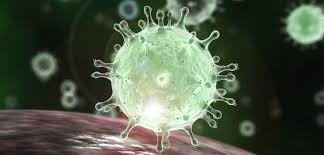
Scientists of Indian Institute of Technology (IIT), Jodhpur have explored the neuroinvasive nature of the COVID 19 virus SARS-CoV-2 highlighting that loss of smell and taste of infected patients makes their entire Central Nervous System (CNS) and the underlying structures in the brain more prone to viral infection with devastating effects.
Daily Current Affairs Quiz 2020
Key-Points
SARS-CoV-2 interacts with a specific human receptor known as hACE2 (human angiotensin-converting enzyme-2) which is the entry point of the virus.
It has an almost ubiquitous presence in most human organs ranging from lung parenchyma to nasal mucosa. The brain expresses this receptor.
The infected people attribute the loss of smell or taste as the nose and mouth both are very important entry points of the virus. It then slowly enters the olfactory bulb using the neurons of the olfactory mucosa. The olfactory bulb is located in the forebrain and is chiefly responsible for the sense of smell.
It explains the loss of smell associated with many asymptomatic carriers of COVID-19 and also may be exposing the CNS to viral infection.
When infecting CNS, the virus completely destroys the medulla oblongata of the hindbrain, which regulates breathing, heart, and blood vessel function in the COVID-19 patients.
The study also suggested the brain autopsies of COVID-19 infected patients and the analysis of their cerebrospinal fluid.
It suggested therapeutics agents ranging from the peptide-based therapeutics to curb the interaction between the viral protein and the human receptor to the strategic design of small molecule inhibitors designed against the viral spike protein that interacts with the ACE2.





